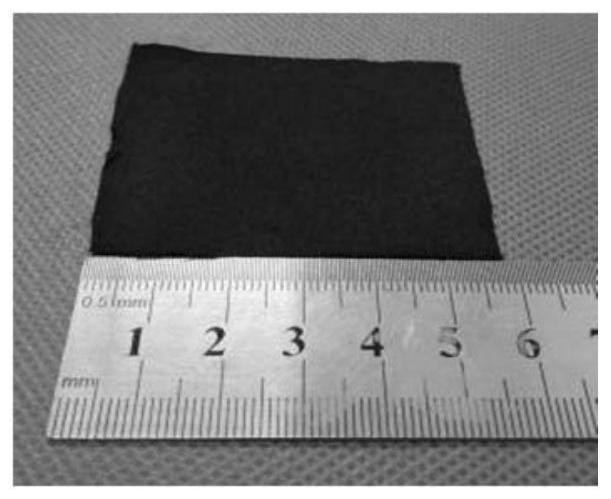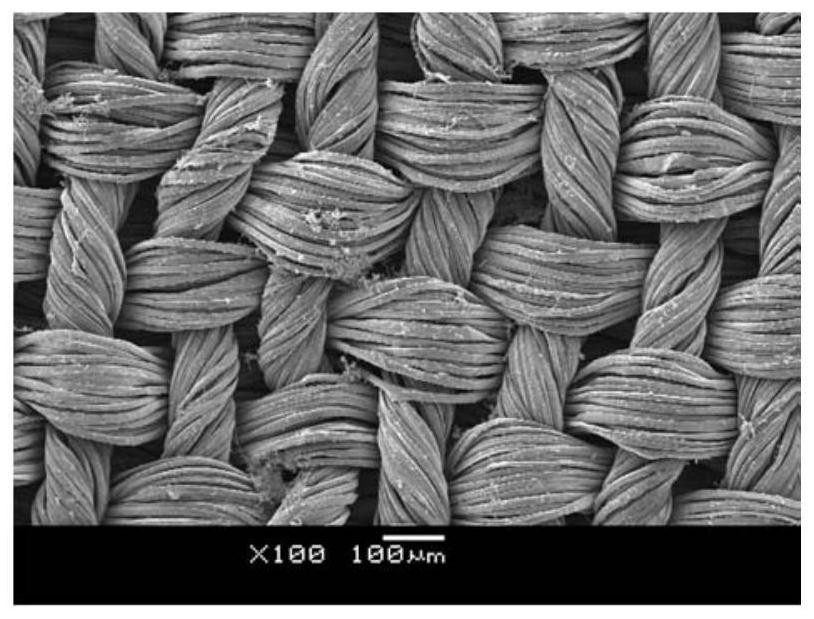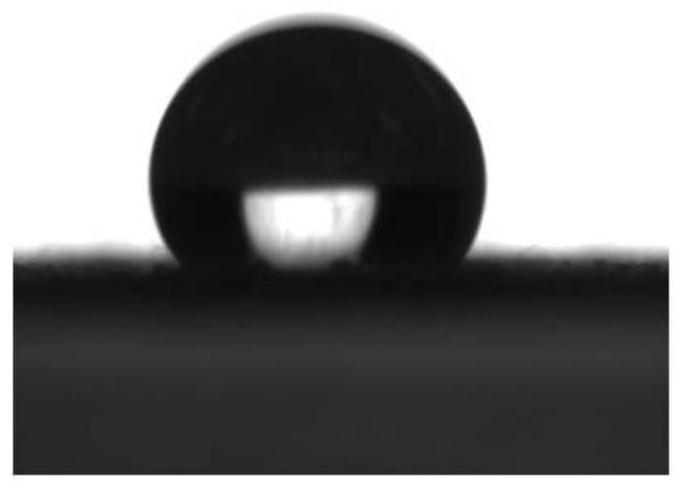Preparation method of in-situ polymerization low-resistance stable-conduction hydrophobic fabric
A technology of stable conduction and in-situ polymerization, used in animal fibers, textiles and papermaking, and liquid-repellent fibers, etc., can solve the problems of uneven distribution of conductive organic polymers, complex processes, and large resistance values. The effect of increasing surface and internal adsorption, enhancing interaction, and improving conductivity
- Summary
- Abstract
- Description
- Claims
- Application Information
AI Technical Summary
Problems solved by technology
Method used
Image
Examples
Embodiment 1
[0051] Example 1: After cleaning the silk woven fabric with absolute ethanol for 0.5h, treat it with 0.1mol / L pyrrole solution for 2h, then add 0.05mol / L ferric chloride to the fabric-conductive polymer solution complex Solution, under the condition of 3 ℃, low temperature polymerization reaction 2h. Wash the treated fabric with deionized water several times, and dry it under vacuum at 50°C for 10 minutes to obtain in-situ polymerized low-resistance stable conductive hydrophobic fabric (see Figure 1-Figure 3 ). The electrical resistance of the fabric is 606.7Ω, the thickness is 0.214mm, the breaking strength is 389.3N, the breaking elongation is 23.2%, the fiber diameter is 10.71μm, the pore size is 6.43μm, and the surface contact angle is 135.5°.
Embodiment 2
[0052] Embodiment 2: After the silk woven fabric is cleaned with absolute ethanol for 4 h, it is treated with 1 mol / L pyrrole solution for 5 h, and then in the fabric-conductive polymer solution complex, 0.05 mol / L ammonium persulfate solution is added, Under the condition of 5 ℃, the low-temperature polymerization reaction was carried out for 4 hours. Wash the treated fabric with deionized water several times, and dry it under vacuum at 60°C for 30 minutes to obtain an in-situ polymerized low-resistance stable conductive hydrophobic fabric (see Figure 4-Figure 6 ). The electrical resistance of the fabric is 11.07kΩ, the thickness is 0.221mm, the breaking strength is 427.1N, the breaking elongation is 24.2%, the fiber diameter is 12.64μm, the pore size is 8.0μm, and the surface contact angle is 129.3°.
Embodiment 3
[0053] Example 3: After the nylon warp knitted fabric is cleaned by hot washing for 0.5 h, it is treated with 0.7 mol / L aniline solution for 5 h, and then added to the fabric-conductive polymer solution complex with 0.3 mol / L aniline solution. Ammonium sulfate solution, under the condition of 5°C, low-temperature polymerization reaction for 2h. Wash the treated fabric several times with deionized water, and dry it under vacuum at 50°C for 30 minutes to obtain an in-situ polymerized low-resistance stable conductive hydrophobic fabric (see Figure 7-Figure 9 ). The electrical resistance of the fabric is 0.94kΩ, the thickness is 0.38mm, the breaking strength is 312.27N, the breaking elongation is 90.57%, and the surface contact angle is 116.1°.
PUM
| Property | Measurement | Unit |
|---|---|---|
| thickness | aaaaa | aaaaa |
| diameter | aaaaa | aaaaa |
| pore size | aaaaa | aaaaa |
Abstract
Description
Claims
Application Information
 Login to View More
Login to View More - R&D Engineer
- R&D Manager
- IP Professional
- Industry Leading Data Capabilities
- Powerful AI technology
- Patent DNA Extraction
Browse by: Latest US Patents, China's latest patents, Technical Efficacy Thesaurus, Application Domain, Technology Topic, Popular Technical Reports.
© 2024 PatSnap. All rights reserved.Legal|Privacy policy|Modern Slavery Act Transparency Statement|Sitemap|About US| Contact US: help@patsnap.com










